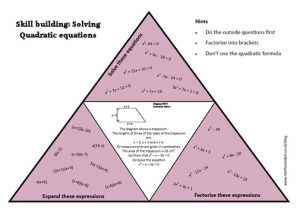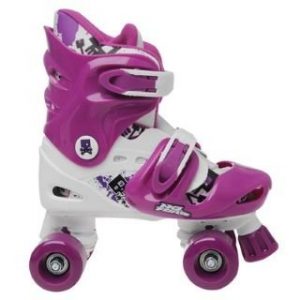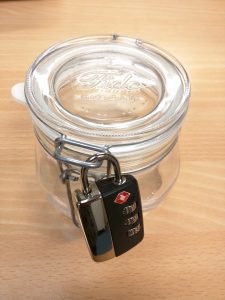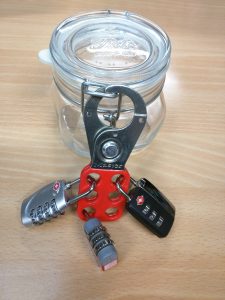If you teach in the UK and haven’t used the excellent Access Maths site, why not?
Seriously, you are missing out!
I’ve used and recommended to colleagues lots of the Access Maths resources. This is the latest worksheet I’ve downloaded (click on the image to link to the 9-1 GCSE resource page):
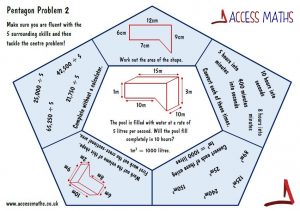 Image credit: www.accessmaths.co.uk
Image credit: www.accessmaths.co.uk
I used these pentagonal problems (I believe they are know in pedagogical circles as ‘Fox Diagrams’ – but you try Googling that term and not getting a page of pictures of foxes) with my GCSE class as a two part homework. The first homework was to do the outside skills – if they felt confident they could skip questions, if they needed help they should come and see me. I stressed that they would need to use these techniques to part two and it was their responsibility to make sure they were ready. Part two of the homework was to complete the middle ‘exam’ question in their books in their books, showing the full method.
I actually enjoyed marking this homework as it gave me an insight into how they visualised problems – there were at least four different ways to complete this task. Unusually I made any low achieving student come back and redo their homework in an informal detention. By spending a few minutes reflecting on the skills they’d already practised (or should have practised), every student jumped from 0 or 10% to 100% correct. I did little more than point out where their technique had started to fail them. These students left the extra maths session with big smiles and a sense of achievement.
Inspired by the talented @AccessMaths (you really should follow them on Twitter) I’ve done my own triangular resource on expanding, factorising and solving quadratic equations.
Down the pdf here: Staged Quadratics problems

